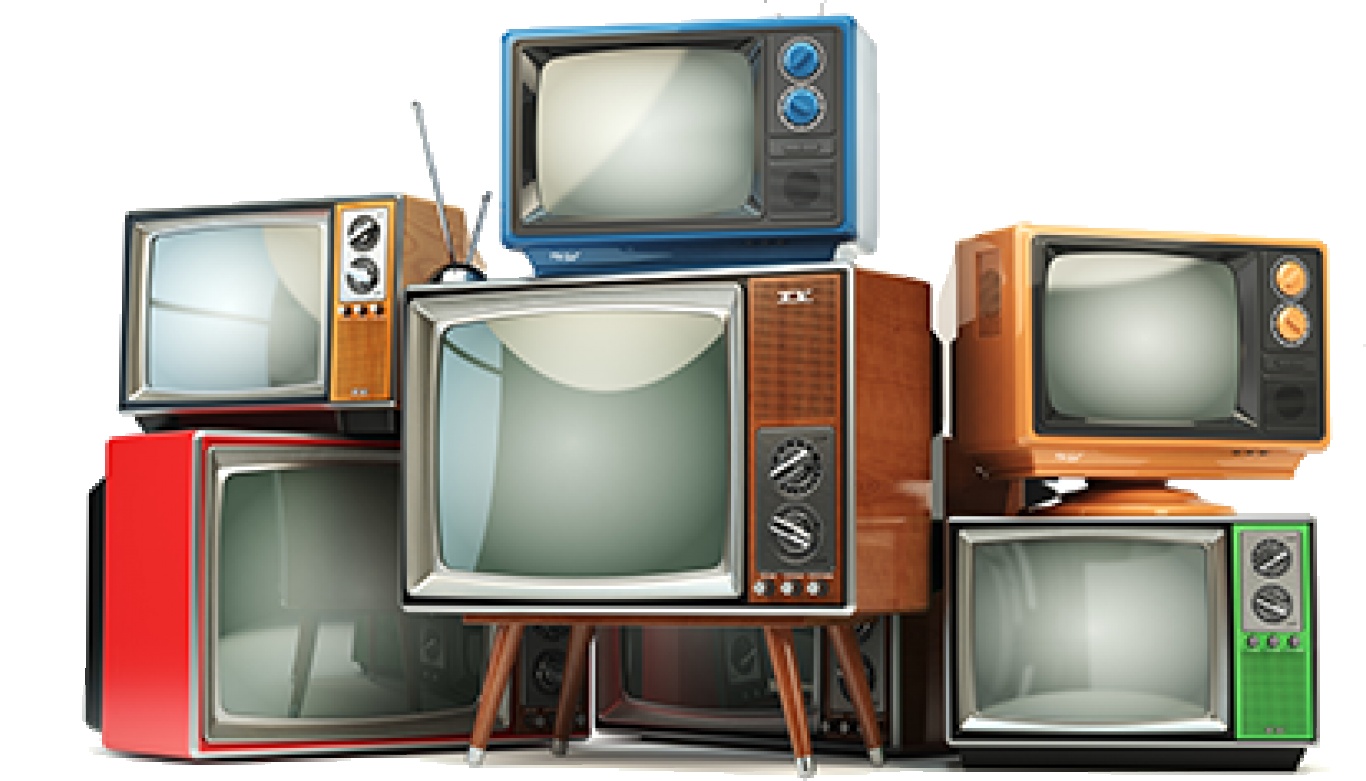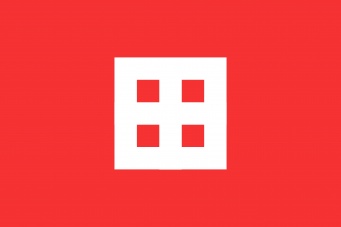
TV Broadcasting – Is The Future Bright or Bleak?

How will our industry develop over the next 5 years?
TV is now a ‘pull’ medium as much as a ‘push’ medium. That is, people pull – from the choice available – what they want to watch, when they want to watch it and the device they want to watch it on.
It’s no longer only about sitting in front of a set and watching whatever is ‘pushed’ onto us.
But are those traditional forms of delivery and consumption here to stay, or is the emergence of video on demand (VOD) and over-the-top (OTT) services going to topple the once-mighty linear TV broadcasting format?
Everyone knows the TV industry is changing, but can broadcasters stay successful?
To look to the future, we took stock of the present with a nod to the past before peering into our crystal ball.
Now…
Here’s our take on the TV broadcasting insights from the infographic:
1. Linear TV vs On-Demand
The boundaries of TV broadcasting are shifting, says Nick Herm, Director of Strategy at Sky:
Cord-cutting, cord-shaving & cord-nevering
Research firm Enders Analysis reported last year:
One thing’s for sure: there is a battle going on for our attention in front of screens, and that fight is only going to intensify over the coming months and years.
2. The number of distribution platforms has increased…
Yes, that’s true and our choice of viewing platform is determined by many factors, not least our…
- Age (is a pensioner more likely to watch something on DTT or Facebook Live?)
- Lifestyle (let’s say you work a night shift and want to watch something when you wake up and have a few hours before you leave for work again, are you more likely to go to Netflix or Freesat?)
- Family (do you hang on to your Sky subscription because your daughter is desperate to retain the familiarity and convenience of having Cartoon Network or Nickelodeon available 24/7 on that particular platform?)
Lots of platforms = lots of choice, which is good for enabling us to watch what we want, when we want to watch it and the device we want to watch it on.
3. …Using ever-evolving technology
Digital technology has enabled more and more audience data to be collected and analysed, which has led to broadcasters giving audiences more of what they want.
And as they say: “Money follows attention.”
Convenience and quality content for us, the viewers, leads to revenue for the equipment manufacturers, platforms, content owners and advertisers.
4. But Netflix is the key disruptor
- 54% of U.S. adults report that they have Netflix in their household, while 53% have a DVR. the first time that households with Netflix (including those sharing passwords) have surpassed the level of those with a DVR
Netflix’s modus operandi of offering upfront deals for the full run of a show, rather than sticking with the traditional model of paying for a pilot and then deciding on whether to fund a series, has changed both the market and viewing habits (more on this below).
One of the primary differences between traditional TV broadcasting and newer distribution platforms has been, so far, geography: local content for local audiences produced and distributed by local broadcasters.
Content that can easily cross borders and translate costs much more to produce, and has often – so far – been made and distributed by the big OTT players.
But Netflix is also investing in its own localised programming, including a show called Ultimate Beastmaster (produced by and starring Sylvester Stallone).
Uniquely, the show is being filmed at six different times for different markets.
According to Netflix CEO Reed Hastings, the company has already spent $1.75 billion on licensing foreign shows and creating original content itself or through co-productions.
Bjarne Andre Myklebust, Head of Distribution at national Norwegian broadcaster NRK, says:
So if domestic broadcasters, with domestic budgets and domestic audiences, were planning (hoping) on competing with global players with huge funds by being the best on delivering local content, they might need a new strategy.
Executive producer and star of House of Cards Kevin Spacey on Netflix:
5. …Closely followed by social media
Will we one day see Premier League football live on Facebook? With all that data on its users, surely that’ll prove too alluring for the league to resist.
Wayne Rooney’s testimonial was broadcast on Facebook Live – and watched by 3.7 million viewers worldwide, which might be a taste of things to come.
We’ve already seen, with the example above, how the growing use of data-driven analysis has been used to give audiences what they want, and advertising and revenue generation are changing in the multi-platform era…and the big social networks are right up there, driving things in this respect.
In their March 2017 article, “How Facebook could change the face of Premier League broadcasting – and why the television giants should be scared”, The Independent wrote:
6. It’ll always be about content: people love stories
…and it’ll always be about money, of course.
As we discussed on this blog earlier in 2017, TV companies have entered the mobile market, telecoms companies have teamed up with or acquired content owners, and at least one content-based firm has pushed into a new market to reach a larger audience.
Sport plays such a key part (and commands such huge figures for broadcast rights) because, ultimately, it’s about stories, everywhere you look:
- Leciester City winning the Premier League
- Usain Bolt winning his ‘triple triple‘
- Andy Murray’s rise to the top of tennis
The list is endless. Literally.
Rights, advertising, subscriptions…money follows attention.
Away from sport, consider the huge American series of recent years – such as Breaking Bad, The Walking Dead and Game of Thrones; hits on UK terrestrial TV like The X Factor, Strictly Come Dancing and I’m a Celebrity…they’re all stories.
And audiences simply can’t get enough of them.
7. Is the future bright or bleak? Conclusion
Just as books survived radio, which in turn was never killed off by television…
1. Content curation: too much choice = hard work and often leads to no decision. Dr Liz Evans, of the University of Nottingham:
2. Reassurance: there’s reassurance in the fact that we can watch our favourite channel at any point during a 24-hour period, or that we can watch the news or perhaps another programme at the same time every evening on a particular channel if we want to.
Beyond that, on-air Wimbledon and Glastonbury promos are a subtle but reassuring way of appreciating that summer’s on its way (in the northern hemisphere, at least).
Similarly, the run-up to Christmas on TV prompts many of us to start buying gifts and planning for the festive period, when we see the first promos or the latest seasonal John Lewis ad.
3. Instant gratification: people will very keenly watch great content whatever time of the day or night it’s shown…or made available, hence the ‘bulk release’ of the entire season of House of Cards. Netflix knew that’s what people want. Dr Evans:
4. A sense of occasion: knowing that you’re watching a programme or live event at precisely the same time as millions of other people is comforting.
That’s why there were many more related tweets before and after the broadcast of Doctor Who’s 50th anniversary edition compared to during the programme itself – when viewers were actually watching and enjoying the show.
Binge-viewing, streaming and on-demand are all here to stay but they don’t always give people the feeling that linear offers that we get when we watch something knowing that we’re doing so at precisely the same moment as millions of other people.
It could be the first episode in a new series of our favourite show or a big sporting event. And, in that moment, people find comfort.
Twenty per cent of viewing on the Sky platform is now recorded or on-demand, a figure that’s growing each year. But linear remains the dominant. Nick Herm, Director of Strategy at Sky:
7. Sources – clickable
- https://www.emarketer.com/Article/Do-Younger-UK-Viewers-Watch-TV-Differently-than-Older-Folks/1015237
- http://www.barb.co.uk/tv-landscape-reports/tracker-svod/
- https://www.emarketer.com/Article/Facebook-Adds-VR-Timeline/1015392
- http://www.businesswire.com/news/home/20170216005514/en/Social-TV-Snapchat-Report-2017-major-television
- http://awfulannouncing.com/nfl/nfl-rights-broadcast-tv-win-cbs-les-moonves.html
- http://fortune.com/netflix-versus-hollywood/
- http://leichtmanresearch.com/press/030617release.pdf
- http://www.independent.co.uk/sport/football/premier-league/premier-leagues-television-rights-bubble-might-burst-facebook-a7608356.html
- https://nflcommunications.com/Pages/National-Football-League-and-Twitter-Announce-Streaming-Partnership-for-Thursday-Night-Football.aspx
- https://www.theguardian.com/football/2017/feb/23/fifa-17-gaming-matches-broadcast-live-television-first-time-bt-sport
- https://tmt.knect365.com/otttv-world-summit/highlights
- https://www.youtube.com/watch?v=6FJnnwcK8s4http://fortune.com/2017/03/02/netflix-original-content-reality-tv/
- https://www.youtube.com/watch?v=wPGFlpubb-g
- https://www.youtube.com/watch?v=bPen4mt3b20
- http://digiday.com/media/it-hasnt-killed-us-snapchat-discover-publishers-face-tough-challenge-as-platform-chases-tv/
- http://www.bbc.co.uk/news/world-australia-38876428
Know people who’d find this page useful? Spread the love – share this page using the social share buttons below (on a mobile) or above/right (desktop).

In The Frame - April '23

In The Frame - March '23
